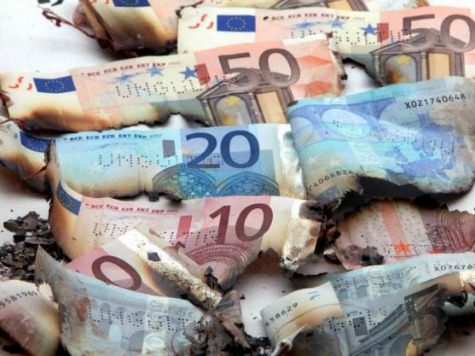
U.S. shopping is expected to be up big during the Black Friday weekend, since the deflated cost of gasoline–under $3 a gallon–is saving consumers $250 million per day. But falling prices that are good for American consumers is seen as downright ugly for Europeans. The main difference between the two economies, regarding the virtue of deflation, is the size of their government sector.
The conundrum regarding the merits of a period of generally declining prices, referred to as deflation, was summed-up last week by Nancy Lazar, chief economist at Cornerstone Macro LP in a report to clients: “Bad deflation weakens growth,” while “good deflation lifts growth.”
European Union officials are panicked their economies are entering a triple-dip recession that could ignite a deflationary crash in prices. Europeans believe that government spending is the prime engine for economic growth. With about 50.3% of their GDP connected to government spending, EU officials use inflation as a tool to increase tax collections through their value-added sales taxes and steep progressive income tax rates.
But despite government spending over 50% of GDP in Italy, unemployment in the fourth largest EU economy rose this week to 13.2%. Youth unemployment for age 15 to 24 rose to a stunning 43.3%. With tax collections at 43% of GDP, Italy is borrowing an incredible 7% of GDP per year, and government debt has ballooned to a near-bankrupt level of 132% of GDP. Italy’s private sector economy is too small, and its competitiveness too undermined by high taxes and costs to be an engine of growth.
The size of the American economy for 2015 is estimated at $18.6 trillion. Total government spending for the fiscal year ending September 30, 2015, is estimated at $6.6 billion ($3.9 billion federal; $.6 billion intergovernmental; $1.5 trillion state; and $1.8 trillion local). Consequently, total government spending in the U.S. as a percentage of GDP is only 36%. With tax collections of about 33% of GDP, the U.S. deficit is only about 3% of GDP.
Because government’s intrusion into the U.S. economy is much less than in the EU, tax cuts actually tend to stimulate growth and result in higher tax collection in America. Tax increases in the U.S. tend to slow the economy and the amount of tax collected on falls.
The U.S. and the EU are experiencing substantially different inflation rates. U.S. inflation is running at 1.7% rate, compared to an EU rate of .3%.
For American consumers, the approximate $.60 a gallon since June deflation in gasoline to under $3 per gallon will add about $90 billion in disposable income to U.S. consumers. But Italian and other EU members saw their average 19% value-added tax inflate to 25% in late 2012. Italians were paying $8.92 for an equivalent gallon of gasoline in June. A $.60 a gallon deflation in prices is less than a 7% reduction in cost. Because of the value-added tax increase, EU citizens are still suffering less disposable income this year.
In the same week that New York Senator Chuck Schumer apologized for passing Obamacare rather than a real stimulus like a tax cut, European Commission President Jean-Claude Juncker presented a plan for the EU Parliament to leverage $6 billion in cash into $396 billion of debt to provide high-risk capital for government infrastructure projects.
Since Americans believe that “good deflation lifts growth,” U.S. malls this Black Friday weekend are packed with Christmas shoppers expected to use their extra disposable income to increase spending this season by 4.1%. But with Europeans concerned that “bad deflation weakens growth,” Bloomberg’s EU headline was “Why Italy’s stay-home shoppers terrify the euro zone.”

COMMENTS
Please let us know if you're having issues with commenting.